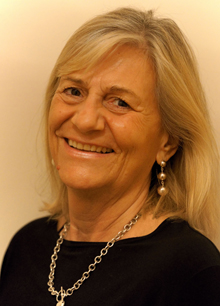Printed in the Spring 2025 issue of Quest magazine.
Citation: Hoepfl-Wellenhofer, Susanne, "Demian, Daimon, and Theosophy:
Navigating Hermann Hesse’s Vision of Spiritual Awakening" Quest 113:2, pg 8-9
By Susanne Hoepfl-Wellenhofer
 Growing up in a Catholic country where religious education in school was mandatory, I was taught that demons are the fallen angels who followed Satan and rebelled against God. Later in life I learned that the term demon is derived from the Greek word daimon, which means supernatural being or spirit.
Growing up in a Catholic country where religious education in school was mandatory, I was taught that demons are the fallen angels who followed Satan and rebelled against God. Later in life I learned that the term demon is derived from the Greek word daimon, which means supernatural being or spirit.
This concept of the daimon—a spiritual being that influences a person’s character and is an intermediary between the Divine and man—is central to Hermann Hesse’s 1919 novella Demian. Through the character of Demian, Hesse explores the complexities of human nature and the transformative power of embracing one’s inner voice and true self. The title came to Hesse in a dream and is the direct outgrowth of his psychoanalysis of 1916‒17. It marked a new direction in both the tone and message of his works.
At the heart of Demian’s exploration is the journey of the protagonist, Emil Sinclair. Even at a young age, Emil is aware of an inharmonious world and knows that he has a dual nature and a darker side. The character Demian, portrayed as an enigmatic and almost otherworldly figure, plays an important role in the novella, helping Sinclair navigate his inner conflicts and understand the deeper truths of life. Demian represents a higher, more enlightened aspect of Sinclair’s psyche. He encourages Sinclair to question societal norms, pointing out the world we are taught to accept—the world of social norms, moral rules, and conventional beliefs—is only one aspect of a larger reality. He criticizes the way authority figures, like priests and teachers, often promote a one-sided view of life, focusing on what is considered “good” or “acceptable” and repressing the “bad” or “unacceptable.”
You have known that your “permitted” world was only half of the world and you have tried to subjugate the second half after the manner of priests and teachers. It will not be to your benefit. It benefits no one once he has begun to think. (Hesse, 69)
Equally important to Emil Sinclair is his deep desire to discover and live in accordance with his true nature—his authentic self—but he notes his deep frustration and inner conflict with this process: “All I wanted was to try and realize whatever was in me. Why was that so difficult?” (Hesse, 106).
On a broader level, this quote speaks to a universal human experience—the challenge of becoming who we truly are. We all struggle with the gap between our inner desires and the life we feel compelled to lead due to external pressures. Sinclair’s question—why it is so difficult—captures the essence of this struggle, highlighting the courage required to pursue true self-realization.
Over time, Emil Sinclair realizes that those who are on the path of awakening—those who have begun to realize their true inner selves—are often seen as strange, mad, or even threatening by society.
We who bore the “sign” might rightly be considered odd by the world, even mad and dangerous. We were “awake” or “wakening” and our striving was directed at an ever-increasing wakefulness, whereas the striving and quest for happiness of the rest was aimed at identifying their thoughts, ideals, duties, their lives and fortunes more and more closely with that of the herd. (Hesse, 160)
The “sign” represents an inner mark of difference, a spiritual or psychological awakening that sets one apart from the conventional world.
The concept of the daimon is central to Demian, serving as a metaphor for the inner guiding force that leads Emil Sinclair on his path to self-discovery and individuation. (Indeed the name Demian evokes daimon.) As time goes by, Sinclair becomes more self-confident. Eventually Demian tells him that if he needs help in the future, it won’t come from an external source. Instead, Sinclair will have to look inward, as the strength and guidance he seeks are already within him. This suggests that Demian represents not just a friend or mentor but a part of Sinclair’s own consciousness, particularly his emerging self-confidence and understanding of his own power. At one point, Demian says: “I shan’t come riding crudely on horseback or by railway train next time [you need help]. You’ll have to listen to your inner voice and then you will hear me speak within you. Do you understand?” (Hesse, 183).
Demian aligns with Theosophical teachings, which view the daimon or higher self as a guiding force that helps individuals on their spiritual journey of self-discovery and enlightenment. Theosophists believe in the divinity inherent in all beings and in the potential for each individual to achieve higher states of consciousness through an inward journey of self-discovery. These ideas of the divine spark within and the transformative power of embracing one’s true nature are central to the narrative of Demian as well.
Quotations are from Hermann Hesse, Demian, translated by W.J. Strachan: https://www.holybooks.com/wp-content/uploads/Demian-By-Hermann-Hesse.pdf.
Susanne Hoepfl-Wellenhofer is a member of the board of directors of the TSA. Her translation of Franz Hartmann’s Outline of the Secret Doctrine was reviewed in Quest, winter 2025.

